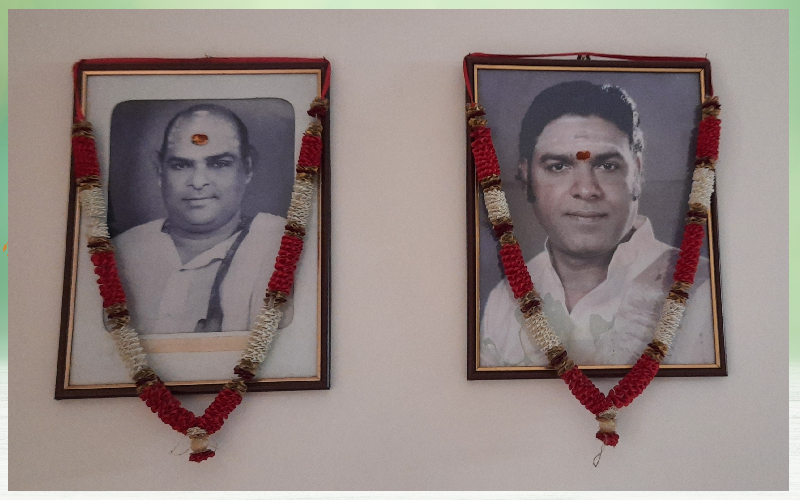
Mayura Nattuvanga Nanmani, Vazhuvoor S. Palaniappan Pillai is the grandson of the Padmasri Natyakalakesari, Vazhuvoor Ramiah Pillai and the elder son of Kalaimamani Natyakalasamrat, Vazhuvoor R. Samraj. Guru, Muthuswamy Pillai is the person who taught him the fine art of dancing before he became a part of his grandfather and father’s dance profession. His multifaceted personality can be seen from his skills in handling various musical components like Song, Mridangam, Flute, Violin, and Clarinet, apart from dance.
The origin of the ‘Bharatam’ could be traced back to ‘Sadhir’. It was one of the ancient dance forms practiced by the Devadasis in front of the deities at the temple. (‘Devadasis’ meant beauteous maidens who served the Devatas in a temple by dancing.) The peculiar kind of dance was also performed to invoke God. It did not have any set up of a stage but was presented in the sanctum sanctorum while the Utsava Vigraha was brought inside the temple after going round the village every night. The ‘Sadhir’ dance form, which was only performed in front of the Lord, was in the due course of time was taught to the public with a modification of name, ‘Bharatam’. Then grew the various styles in ‘Bharatam’ such as the Pandanallur, Vazhuvoor, Melattur Banis etc. Among the distinct three styles, Vazhuvoor and Pandanallur was the most practiced in the country.
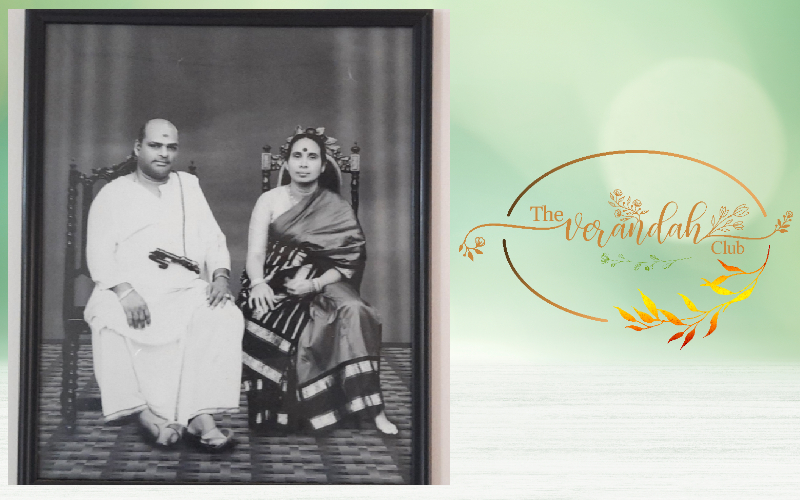
The Vazhuvoor Bani or the style of coaching was popularized by Vazhuvoor Ramaiah Pillai. This Bani had seen 15 generation of artists, i.e., over 2000 years. It could be noticed that the Vazhuvoor Bani is more expressive than the other variations. The dancers who practiced this style also were abided to follow a particular dress code, a Panchagajan type sari with elaborate frills. Without a mention, the make-up formed an inextricable part of the classical dance. This kind of dress-code was said to have invented during the 1930s by Vazhuvoor Ramaiah Pillai.
The artist turned teacher, Vazhuvoor S. Palaniappan Pillai said about the priceless and interesting history which is to be known by the dancers of ‘Bharatam’, “The ‘Devadasi-s’ were honored with pieces of lands by the king for their performance at the temple and one such village was Vazhuvoor. The Bani which was practiced by the dancers who came from that village could be rightly termed as ‘Vazhuvoor Bani’. The dance, form then, started gaining popularity and was made available to all the enthusiasts. During the 1950s and 60s dance was usually taught in the houses, verandahs, and temples in the tradition of ‘Devadasi-s’. Over the years, however, the term, ‘Devadasi-s’ had certainly gained a derogatory connotation because of the impartial understanding of the colonial anarchists, which, of course, was false.”
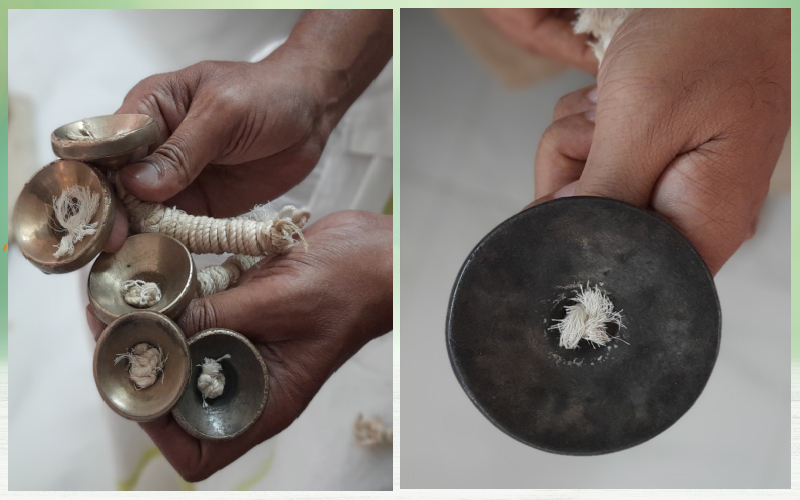
The dance teacher’s house aesthetically preserved the antique musical instruments such as Veena and Tabla. The portraits of great artists and his own ancestors were to be seen artistically hung on the wall. One could also find a well-adorned, hand painted, Gajasamharamoorthy standing on one foot over the head of an elephant at the entrance. The teacher’s wife, Prashanthi Palaniappan gladly added, “This particular portrait of the Gajasamharamoorthy was specially designed and gifted by us to him on one of his birthday celebrations. This could be rarely availed anywhere.” The house also consisted of a small dance studio where dance was taught. Despite the heat of the day, the entire family and few of his students were also present in the vicinity during the interview with The Verandah Club.
Vazhuvoor Palani added his views in a majestic tone, “Though the Vazhuvoor Bani has grown extremely and is now popular all over the world with many variations, we must never forget the roots and the tradition. The star-artists who propagated this Bani, learnt it from their teachers in small places amidst cats and dogs. At this point, I must make a remark which would be a great justice for teaching Parampara. Any artist who wants to become a teacher must give up the practice as an artist. An artist-teacher is not encouraged by the Parampara because the power to objectively find out the mistakes and to make improvisations among the dancers is lost. The condition is that a dancer, while performing, needs to forget the surroundings but a teacher ought to be constantly aware and be a detached observer of the performance. A teacher must never become a performer along with one's students because of the tempo variations which may occur and foreshadow the performance itself.”
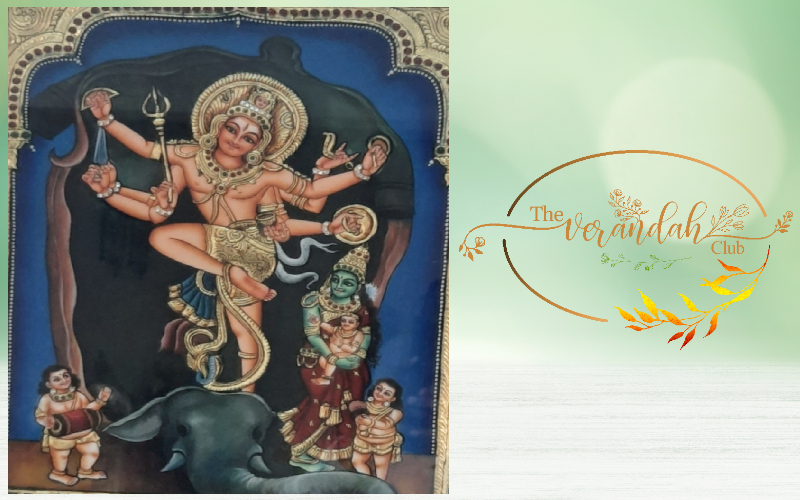
After a few serious conversations shared casually, the dance Guru asked one his students to demonstrate the difference between the two styles of Bharatam, the Pandanallur and the Vazhuvoor. The Guru also insisted on the importance of accompaniments and the need to follow a specific order so as to aid the artist to perform better. “If the accompaniment artists plan to exhibit their skills and talents without falling in tune with other artists, then the whole performance become disoriented,” Vazhuvoorar pointed the fact humbly.
The Vidwan not only saves the traditional Bani through his efforts but also preserves the ancient musical accompaniments used by many artists. He also shows the musical sound difference between the old Tattakazhi and the new one. He also preserves the centuries old Nattuvaanga Thala Jathi. Those accompaniments that he protects were not allowed to be used by anyone else until the Guru sees the disciple to have grown to his level and becomes qualified to handle them.
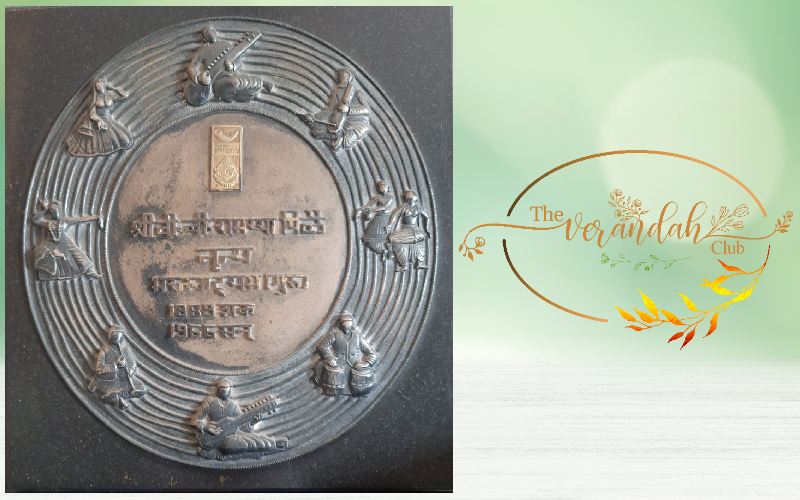
The reputation of the teacher grows with the quality of the students that he/she unveils. In accordance with the statement, it can be noted that the disciples of Vazhuvoor Ramaiah Pillai and Vazhuvoor R. Samraj includes, Kumari Kamala, Kamakshi Maami, M. S. Subbulakshmi, Radha Viswanathan, Kalaimamani K. B. K. Prema Jagadeesan, Kalaimamani K. J. Sarasa, S. K. Rajaratnam, Chitra Visweswaran, Lalitha Padmini, Y. Jeyanthi, Hemamalini, Actress Jayabharathi, L. Vijayalakshmi, Venniladai Nirmala, Jayanthi Ramachandra, Shobana Ramesh, Bombay Sister’s daughter, Jayanthashri and many more.
One of the students, Roopa Varshini Palaniappan, who is currently studying under the teacher 'performing Nattuvangam Jathi,
The enthusiastic Vazhuvoorar politely said, “I do not run a dance factory. I give importance to values. Art is learnt by grace and practice. It’s not robotics to make sharp movements. I train limited number of students to give individual attention. Fitness also is an important aspect of dance and considerate focus is given to fitness of the dancers. I believe having a doctorate without talent is more an absurdity.”
He continued, “Although there are variations in the Vazhuvoor Bani, the differences arise mainly because of the various dancers and their creative efforts. The dance I teach here is the traditional one that which I learnt from my Guru and grandfather. I do this to keep up the legacy and tradition. I remind everyone, to keep up the roots is to protect our identity!”
NEXT ARTICLE